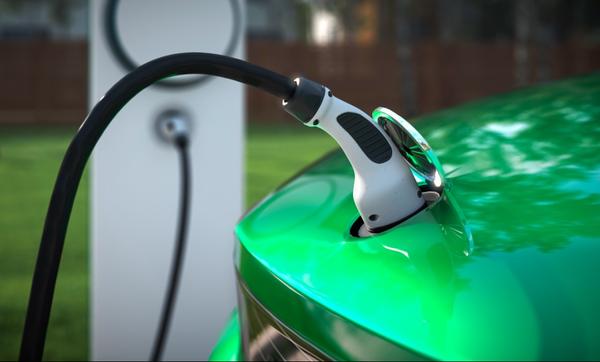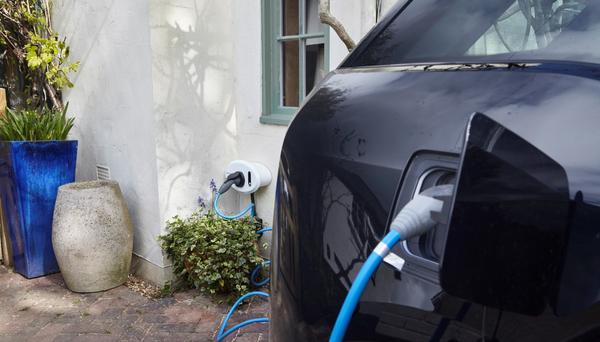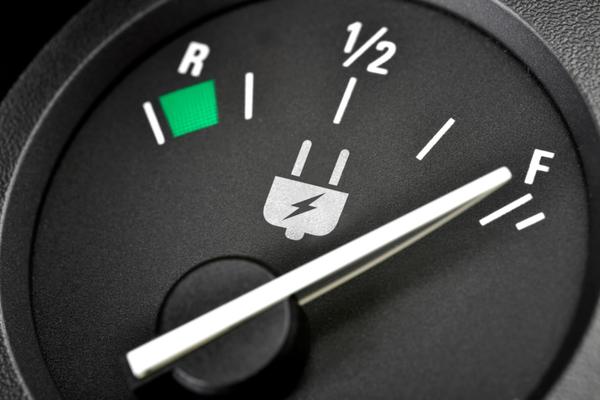Advice
Testing the Health of an Electric Car's Battery
Here's how you can test the health of an electric car, either on a test drive or when you're out and about in the car you bought.


Words by: Andrew Woodhouse
Last updated on 12 March 2025 | 0 min read
A battery health check can keep your electric car running smoothly for longer, and help you find a second hand electric car that’s reliable enough to get you around.
Once you know what to do, it’s pretty easy to test an electric car’s battery health and there are a few easy and accessible tests you can perform at home or on a test drive.
Once you know what to do, it’s pretty easy to test an electric car’s battery health and there are a few easy and accessible tests you can perform at home or on a test drive.
Which battery are we talking about?
Electric cars have two batteries:
• a standard 12-volt battery that starts the car and powers the central locking, interior lights and other instruments (similar to any petrol or diesel vehicle) • a larger battery (usually lithium-ion) that powers the motor and drives the wheels of the car We’re talking about the second, larger battery type in this article. You can learn more about electric car batteries here.
• a standard 12-volt battery that starts the car and powers the central locking, interior lights and other instruments (similar to any petrol or diesel vehicle) • a larger battery (usually lithium-ion) that powers the motor and drives the wheels of the car We’re talking about the second, larger battery type in this article. You can learn more about electric car batteries here.
What is electric car battery health?
When we talk about electric car battery health, we’re talking about the battery’s capacity compared to new. That’s how much energy it can hold and keep available to power the car.
Battery capacity is measured in kilowatt hours (kWh) and varies according to the size and type of car. Typically this will be in the range of 30kWh and up for small hatchbacks, 60-70kWh for mid-size crossovers and as much as 100kWh or even more for luxury and performance models. Manufacturers will often list a ‘gross’ figure for the capacity of a car’s battery, which tends to be slightly higher than the ‘net’ or ‘usable’ capacity. Over time, the battery capacity naturally fades. It usually only fades by one or two per cent a year, but that means that, after a few years, there’s less energy available to power the car when the battery is fully charged. This means charging the car to 100 per cent gets you fewer miles than the same battery would have done few years prior. We won’t delve further into the science for now, but the key takeaway is that an older battery usually holds less charge. That doesn’t mean older cars should be avoided – everyone’s mileage and driving style is different. But knowing how much capacity a battery has should help you make a more informed purchase. Learn more about charging an electric car here, and more about charging a car at home here.
Battery capacity is measured in kilowatt hours (kWh) and varies according to the size and type of car. Typically this will be in the range of 30kWh and up for small hatchbacks, 60-70kWh for mid-size crossovers and as much as 100kWh or even more for luxury and performance models. Manufacturers will often list a ‘gross’ figure for the capacity of a car’s battery, which tends to be slightly higher than the ‘net’ or ‘usable’ capacity. Over time, the battery capacity naturally fades. It usually only fades by one or two per cent a year, but that means that, after a few years, there’s less energy available to power the car when the battery is fully charged. This means charging the car to 100 per cent gets you fewer miles than the same battery would have done few years prior. We won’t delve further into the science for now, but the key takeaway is that an older battery usually holds less charge. That doesn’t mean older cars should be avoided – everyone’s mileage and driving style is different. But knowing how much capacity a battery has should help you make a more informed purchase. Learn more about charging an electric car here, and more about charging a car at home here.

How to test an electric car’s battery health
There are a number of options, from the affordable and easy through to professional, industry-standard tests that take the most time and cost more. Here, we’ll focus on the tests you can perform yourself.
Test the battery health using the dashboard monitor
Your car’s dashboard gives you a few ways to track the battery’s health over time.
Range Estimation
Electric cars usually display an estimated driving range on the dashboard. This number will be based on the current battery charge level and will factor in driving style, terrain, and weather conditions.
One of the easiest ways to check the battery’s capacity is to fully charge your car, then take it for a drive and compare the miles you actually get against the estimated range. A healthy battery should give you a range that’s pretty close to the estimate. The total available range will decrease with age, so expect less from an older car; but if the actual range is way off, drops by a significant amount, or is inconsistent across charges, there could be something wrong with the battery. When driving, use the heater and air conditioning to see how it affects the available range. If you can, compare your range to similar models of a similar age by asking other electric car owners or checking forums – this’ll give you an idea of what’s normal and what isn’t.
One of the easiest ways to check the battery’s capacity is to fully charge your car, then take it for a drive and compare the miles you actually get against the estimated range. A healthy battery should give you a range that’s pretty close to the estimate. The total available range will decrease with age, so expect less from an older car; but if the actual range is way off, drops by a significant amount, or is inconsistent across charges, there could be something wrong with the battery. When driving, use the heater and air conditioning to see how it affects the available range. If you can, compare your range to similar models of a similar age by asking other electric car owners or checking forums – this’ll give you an idea of what’s normal and what isn’t.
State of Charge (SOC) Measurement
Another simple way to gauge the health of an electric car's battery is to measure its State of Charge (SOC), which is the amount of charge left in the battery at a particular moment.
You’ll usually be able to see this on the dashboard or infotainment screen. The State of Charge will give you a rough idea of how much energy remains in the battery as you go. If it’s dropping a lotchG, you may have an issue. This is a good one to watch as you drive around on a test drive.
You’ll usually be able to see this on the dashboard or infotainment screen. The State of Charge will give you a rough idea of how much energy remains in the battery as you go. If it’s dropping a lotchG, you may have an issue. This is a good one to watch as you drive around on a test drive.
Battery Health Indicators
Many electric vehicles come with a Battery Management System (BMS), which continuously monitors the battery's performance. Battery Management Systems provide valuable information including the battery's temperature, voltage, and current – all of which you can track over time. Some will also assess the overall condition of the battery and report that back to you.
Alongside these health indicators, you should make a note of how long the battery takes to charge and how long it takes to deplete – this will give you an idea of the battery’s health over time. Keep an eye on these stats and consult the vehicle's manual to understand what they mean and whether your battery isn’t performing properly.
Alongside these health indicators, you should make a note of how long the battery takes to charge and how long it takes to deplete – this will give you an idea of the battery’s health over time. Keep an eye on these stats and consult the vehicle's manual to understand what they mean and whether your battery isn’t performing properly.

Diagnostic Scan at Service Centres
For a through view of an electric car's battery health, visit a certified service centre. Trained technicians can perform diagnostic scans using specialised equipment to assess the battery's condition.
Diagnostic scans can reveal in-depth information about the battery's internal resistance, capacity, and overall health. Costs can vary, but it may well prove a worthwhile investment.
Diagnostic scans can reveal in-depth information about the battery's internal resistance, capacity, and overall health. Costs can vary, but it may well prove a worthwhile investment.
Manufacturer's Software Tools
Many manufacturers provide software or smartphone apps that can give you a detailed overview of your electric car's battery health.
Many apps need paying for and will work using a OBD2 reader (which we’ll cover below), which will monitor and share advanced battery statistics including charging patterns, battery capacity measures and historical data. The details shared by the app will vary, so look into what’s available before you buy or rent one. There are also third-party readers and apps from companies like FleetCarma, which log trips and collect stats on your vehicle.
Many apps need paying for and will work using a OBD2 reader (which we’ll cover below), which will monitor and share advanced battery statistics including charging patterns, battery capacity measures and historical data. The details shared by the app will vary, so look into what’s available before you buy or rent one. There are also third-party readers and apps from companies like FleetCarma, which log trips and collect stats on your vehicle.

Diagnostic tools
There are also a range of diagnostic tools that can check the battery's state of charge, voltage and temperature, and identify any malfunction or damage.
OBD2 readers and scanners
Every car has an On-Board Diagnostics (OBD) system, and since 1996 cars have used the OBD2 system to regulate your car’s functions using sensors. This system uses Diagnostic Trouble Codes (DTCs), to tell you what’s wrong with your car, and can also be used for electric car batteries.
To read those codes, you’ll need an OBD2 reader or scanner. A standard reader will simply read and display those codes, then reset the check engine light in the vehicle. A scanner will go one step further and provide troubleshooting tips for diagnosis. OBD2 readers and scanners are available at most garages from around £50.
To read those codes, you’ll need an OBD2 reader or scanner. A standard reader will simply read and display those codes, then reset the check engine light in the vehicle. A scanner will go one step further and provide troubleshooting tips for diagnosis. OBD2 readers and scanners are available at most garages from around £50.
Multimeter
A multimeter is a multipurpose tool that can measure voltage, current, and resistance. It could be used to diagnose problems with various parts of electric vehicles including the batteries.
You’ll need to do a bit of research, and make sure the multimeter can perform open circuit and circuit tests on an electric vehicle, and that it can make accurate temperature measurements. You’ll also have to check the multimeter works at the required test voltage for the car you’re testing. They can cost a couple of hundred quid to buy, so won’t be right for most people, but they are an option for more invested drivers.
You’ll need to do a bit of research, and make sure the multimeter can perform open circuit and circuit tests on an electric vehicle, and that it can make accurate temperature measurements. You’ll also have to check the multimeter works at the required test voltage for the car you’re testing. They can cost a couple of hundred quid to buy, so won’t be right for most people, but they are an option for more invested drivers.
Battery tester
Also available to buy are battery testers that have been designed to test the health of electric vehicle batteries. They measure the battery's state of charge, voltage and temperature and can identify failure or damage.
A range of testers are available at different prices – erring towards the hundreds. Again, they’re not appropriate for the majority of drivers, but could be what’s needed for enthusiasts and collectors.
A range of testers are available at different prices – erring towards the hundreds. Again, they’re not appropriate for the majority of drivers, but could be what’s needed for enthusiasts and collectors.
Third party apps
Third party battery health data providers, like the ClearWatt EV Health Checker app, can test the real range capability and battery health of any electric car. Apps like this measure the efficiency of the vehicle across a few sample journeys, using a combination of mobile telematics and AI to establish the car’s normalised range capability. The benefit of this is that it eliminates external factors like driving style and environmental conditions for a more accurate measure.
Prolonging your battery’s life
Whether you’ve tested your battery or not, there are plenty of things you can do to prolong its life:
• Charge regularly and consistently, ideally keeping the charge level above 20 per cent and avoiding going over 80 per cent unless you are doing a longer journey • Use slow charging whenever possible, as this generates the least amount of heat and stress for the battery • Avoid extreme temperatures by parking in shaded areas when hot and keeping the car covered (ideally in a garage) when cold • Drive gently, avoiding aggressive acceleration and heavy braking as much as possible • Keep the car’s software up to date, as manufacturers often release updates that can optimise battery performance • Keep the car regularly maintained, with the tyres properly inflated and routine services booked in • Start the car properly if it’s out of use for a while – ideally you should store it in a cool, dry location with the charge level somewhere between 40 per cent and 60 per cent
• Charge regularly and consistently, ideally keeping the charge level above 20 per cent and avoiding going over 80 per cent unless you are doing a longer journey • Use slow charging whenever possible, as this generates the least amount of heat and stress for the battery • Avoid extreme temperatures by parking in shaded areas when hot and keeping the car covered (ideally in a garage) when cold • Drive gently, avoiding aggressive acceleration and heavy braking as much as possible • Keep the car’s software up to date, as manufacturers often release updates that can optimise battery performance • Keep the car regularly maintained, with the tyres properly inflated and routine services booked in • Start the car properly if it’s out of use for a while – ideally you should store it in a cool, dry location with the charge level somewhere between 40 per cent and 60 per cent
Learn more about electric cars
Whether you’re need tips on keeping your electric car running at its best, or you’re thinking about making the switch to a used or new electric vehicle – we’ve got you covered. Head over to our electric car hub for the latest news, reviews and guidance and ask us anything on social!